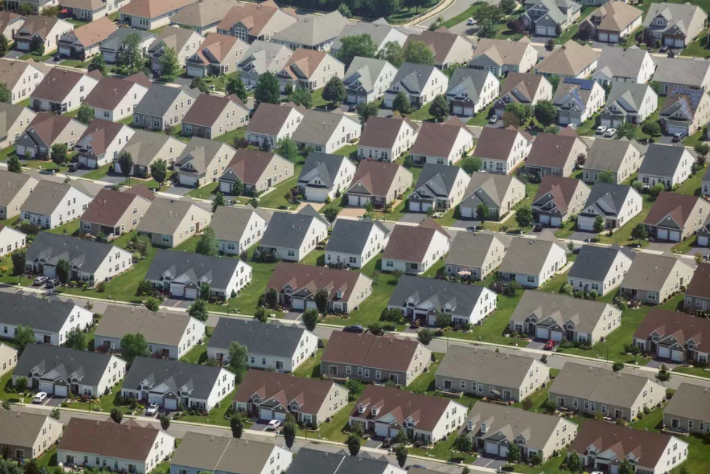COVID-19 has caused volatility in seemingly everything but housing.
By Jeff Andrews May 21, 2020, 12:00pm EDT
More than 38 million Americans have lost their jobs since the outbreak of the COVID-19 pandemic. Stay-at-home orders have ground much of the economy to a halt, prompting trillions in stimulus spending by the federal government in hopes of keeping industries afloat.
But anyone hoping a silver lining to the economic chaos would be deals in the housing market have thus far been disappointed; for the week ending May 9, the median listing price in the United States was up 1.4 percent year-over-year, according to Realtor.com. Existing home sales in April fell by almost 18 percent, but prices rose 7.4 percent compared to a year ago.
Why isn’t the tanking economy bringing home prices down with it? It’s a reasonable question given that so much of the economy moves in lockstep, and the last economic crisis in 2008 sent the housing market into free fall.
So what’s different this time around? Let’s break it down. The price of anything is a function of the relationship between supply and demand. Generally, home prices have been pushed up over the last 5 years by high demand created by a then-booming economy and a low supply of housing for sale, due in part to relatively low levels of housing construction and available land on which to build.
After the outbreak of the pandemic, housing demand fell as buyers lost their jobs, part of their income, or simply didn’t want to be shopping for a house in the middle of a viral outbreak and what figures to be a period of great economic uncertainty.
Demand dropping was evident in a number of metrics. Although a weak indicator of buyer demand, traffic to real estate portals like Zillow and Redfin dropped significant in the beginning of the outbreak, as did more reliable indicators like pending home sales and weekly mortgage applications.
Usually, a huge drop in demand would put downward pressure on prices; home sellers would be competing with each other to attract a limited number of buyers by dropping their asking price. But while housing demand has dropped substantially, housing supply also dropped in lockstep as potential home sellers pulled out of the market for many of the same reasons buyers are.
New home listings is a good indicator of housing supply, and after stay-at-home orders were enacted, new home listings cratered by as much as 80 percent year-over-year. Redfin reported that 41 percent of offers were subject to a bidding war over the last month, suggesting demand is outpacing supply—just as it was before the pandemic.
While both supply and demand have dropped, the relationship between the two went largely unchanged, meaning the drops in supply and demand were generally proportional to each other. Furthermore, home sales also dropped after the pandemic hit, and it’s hard for prices to move when there aren’t as many housing transactions to make prices move in aggregate. Together, this leaves prices much where they were before the pandemic.
This is consistent with how housing markets have fared in previous pandemics. A Zillow study looked at housing markets in cities hit by previous pandemics in Asia and found that whole activity dropped, home prices didn’t move much. A good way to think about the housing market at this moment is that it’s on pause—buyers and sellers have left the market, transactions have dropped in response, and prices aren’t moving.
For a comparison point, the relationship between supply and demand was very different before and during the 2008 financial crisis. Prior to the collapse, shady lending practices created excess demand for housing by bringing unqualified buyers to the market. Home builders responded by increasing construction to meet this demand.
When the financial system locked up, it brought the excess housing demand to a halt because banks weren’t able to lend in the same volume—not to mention the recession the collapse induced, which caused unemployment to rise and buyers to drop out of the market.
At the same time, banks foreclosed on houses in the millions. Given housing supply was already high from home builders constructing in excess, this sudden pile up of foreclosed houses created a nightmare scenario for the market—low demand and very high supply. Home prices plummeted.
This scenario is highly unlikely to play out again for two reasons. First, there was already a housing supply shortage prior to the pandemic, so any addition to the housing supply wouldn’t be exacerbating an existing over-supply problem, like in 2008.
Second, a foreclosure crisis on the scale of 2008 is unlikely, at least in the near-term, because the federal government has placed a moratorium on foreclosures on federally backed mortgages and directed the mortgage industry to offer mortgage forbearance for up to a year to homeowners who have been impacted financially by the pandemic.
Assuming this stays in place, a wave of foreclosures won’t lead to a supply spike that puts downward pressure on home prices, but given the situation is fluid, it can’t be ruled out that the federal moratorium is lifted.
And historically, the financial crisis was an aberration with regard to how recessions typically impact housing markets. While 2008 obviously destroyed the housing market, previous recessions have barely moved at all. If anything, prices went up.
While the current conditions haven’t led to a short-term price drop, the long-term economic trends induced will likely effect prices in the future. Zillow economist Skylar Olsen says Zillow is forecasting a price drop of 2 to 3 percent through the end of 2020, depending on the city, compared to where prices were in February.
“We don’t expect prices to fall by too much, at least nothing like the last crisis because housing in general is much more resilient than it was last time,” she says. “We didn’t have excess building driven by excess credit that drove excess homeowners. We don’t have excess in housing.”
There are faint signals that housing markets are slowly building back up. Demand metrics like mortgage applications are up, and pending home sales have returned close to their normal in cities less impacted by the pandemic.
However, pending home sales in cities hit hardest on the coasts remain down significantly year-over-year. And markets across the country remain supply constrained, as new home listings remain down year-over-year even in cities that haven’t been hit has hard by the pandemic.







